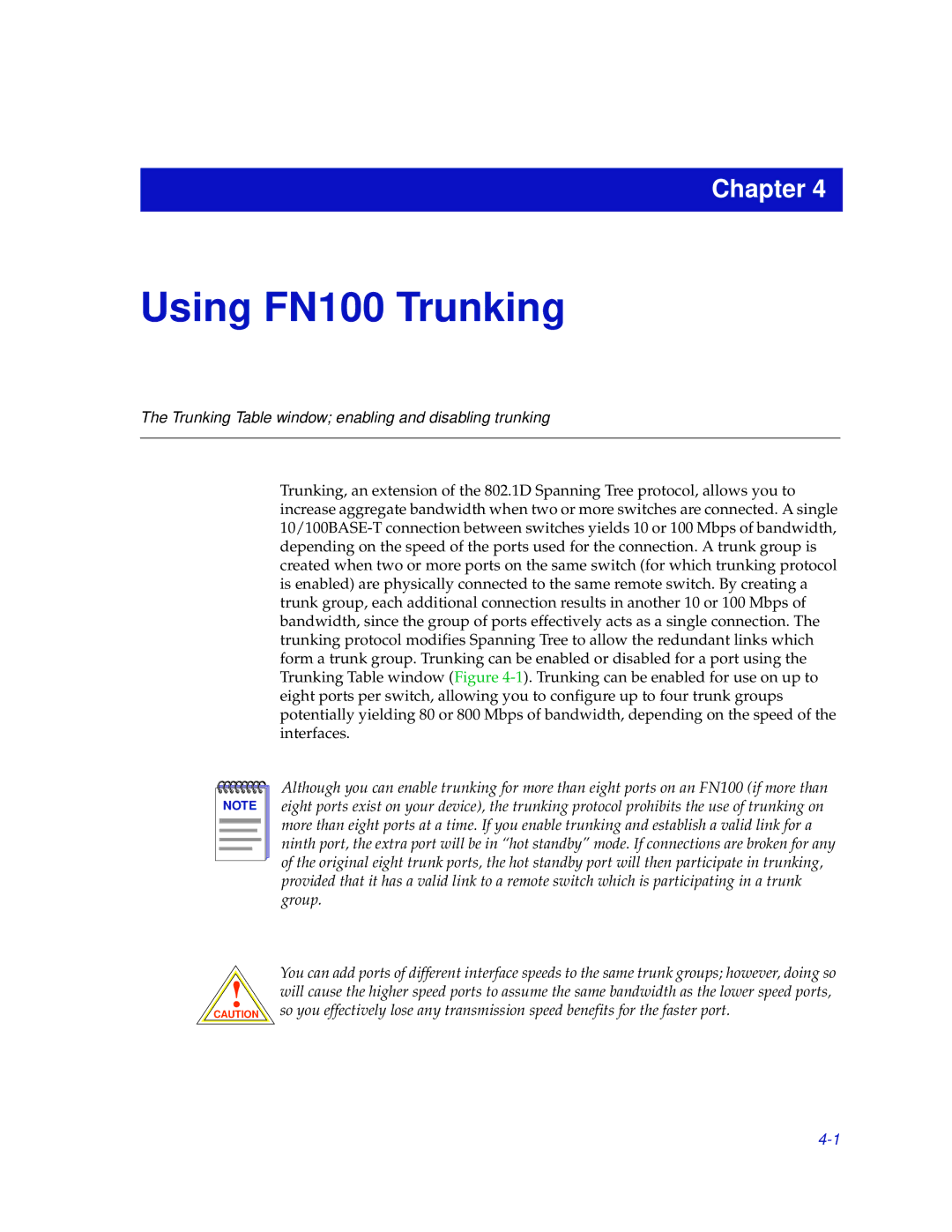
Chapter 4
Using FN100 Trunking
The Trunking Table window; enabling and disabling trunking
Trunking, an extension of the 802.1D Spanning Tree protocol, allows you to increase aggregate bandwidth when two or more switches are connected. A single
NOTE |
Although you can enable trunking for more than eight ports on an FN100 (if more than eight ports exist on your device), the trunking protocol prohibits the use of trunking on more than eight ports at a time. If you enable trunking and establish a valid link for a ninth port, the extra port will be in “hot standby” mode. If connections are broken for any of the original eight trunk ports, the hot standby port will then participate in trunking, provided that it has a valid link to a remote switch which is participating in a trunk group.
You can add ports of different interface speeds to the same trunk groups; however, doing so
!will cause the higher speed ports to assume the same bandwidth as the lower speed ports,
so you effectively lose any transmission speed benefits for the faster port.CAUTION
